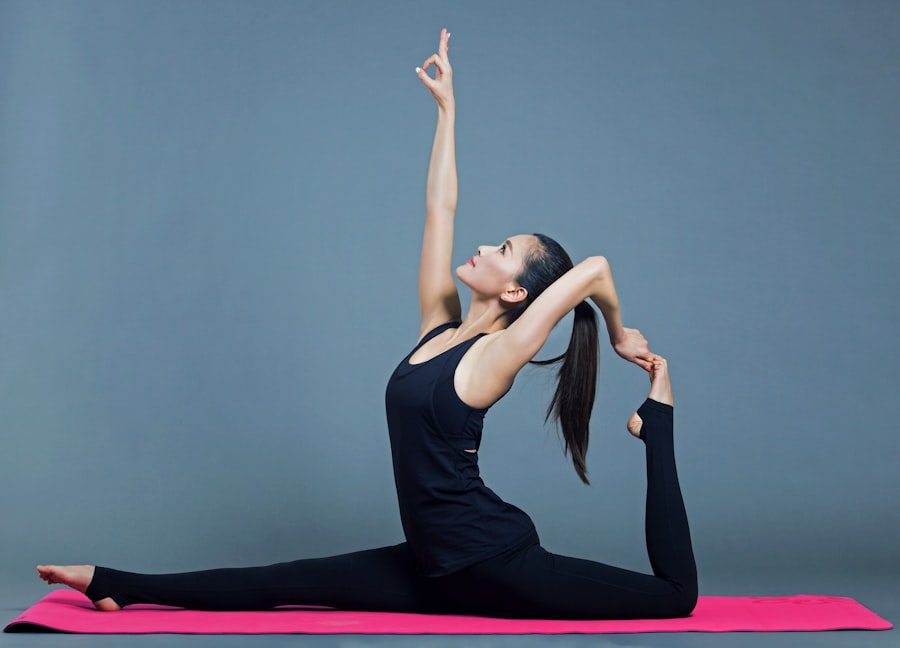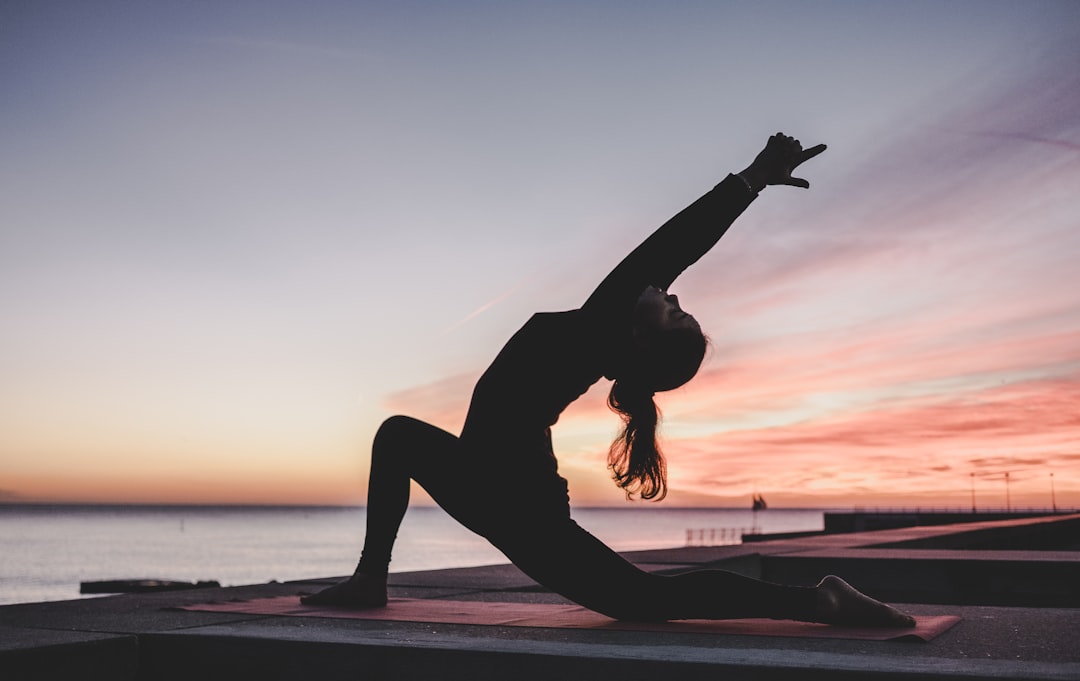Yoga, an ancient practice with roots in India, has transcended cultural boundaries to become a global phenomenon. It is not merely a form of exercise; it is a holistic approach to well-being that encompasses physical, mental, and spiritual dimensions. The word “yoga” itself is derived from the Sanskrit term “yuj,” which means to unite or join.
This reflects the essence of yoga as a means to harmonize the body, mind, and spirit. Over the centuries, various styles and schools of yoga have emerged, each offering unique techniques and philosophies. From Hatha to Vinyasa, Ashtanga to Kundalini, the diversity within yoga allows individuals to find a practice that resonates with their personal needs and goals.
The benefits of yoga are extensive and well-documented, making it an appealing choice for individuals seeking to enhance their overall quality of life. Research has shown that regular practice can lead to improvements in physical health, mental clarity, emotional stability, and spiritual growth. As more people turn to yoga as a means of self-care and personal development, it is essential to explore the myriad ways in which this ancient discipline can enrich our lives.
Whether one is looking to alleviate stress, improve flexibility, or cultivate mindfulness, yoga offers a comprehensive toolkit for achieving these objectives.
Key Takeaways
- Yoga is a practice that offers a wide range of physical and mental health benefits, making it a valuable addition to any wellness routine.
- The physical health benefits of yoga include improved flexibility, strength, and balance, as well as reduced risk of injury and enhanced athletic performance.
- Yoga also provides mental health benefits such as stress reduction, improved mood, and increased mindfulness and self-awareness.
- Regular practice of yoga can lead to increased flexibility and strength, as well as improved posture and body awareness.
- Yoga has been shown to have a significant impact on reducing stress and anxiety, making it an effective tool for managing these common mental health issues.
Physical Health Benefits of Yoga
The physical health benefits of yoga are perhaps the most immediately recognizable aspect of the practice. Engaging in yoga can lead to increased strength, improved posture, and enhanced balance. Many yoga poses require the engagement of multiple muscle groups simultaneously, which helps build functional strength that translates into everyday activities.
For instance, poses like Warrior I and II not only strengthen the legs but also engage the core and improve stability. This functional strength is particularly beneficial for older adults who may be at risk of falls or injuries. Moreover, yoga is known for its ability to improve flexibility.
The various stretches and poses encourage the elongation of muscles and the release of tension in connective tissues. Over time, practitioners often notice a significant increase in their range of motion. For example, poses such as Downward Dog and Pigeon can help open up tight hips and hamstrings, which are common areas of tension for many individuals.
Additionally, the practice of yoga promotes better circulation and cardiovascular health. Certain styles, such as Vinyasa or Power Yoga, can elevate the heart rate and provide a cardiovascular workout while simultaneously enhancing strength and flexibility.
Mental Health Benefits of Yoga

Beyond its physical advantages, yoga is increasingly recognized for its profound impact on mental health. The practice encourages mindfulness—a state of active, open attention to the present moment—which can significantly reduce symptoms of anxiety and depression. By focusing on breath and body awareness during practice, individuals learn to cultivate a sense of calm and clarity that can extend beyond the mat into daily life.
Research has shown that regular yoga practice can lead to decreased levels of cortisol, the stress hormone, thereby promoting a more balanced emotional state. Furthermore, yoga fosters resilience by teaching practitioners how to navigate discomfort both physically and mentally. The act of holding challenging poses can mirror life’s difficulties, providing a safe space to develop coping strategies.
For instance, practicing poses like Tree Pose or Crow Pose requires concentration and balance; falling out of these poses can be frustrating but also offers an opportunity for self-compassion and perseverance. This mindset can translate into greater emotional resilience in everyday situations, allowing individuals to approach challenges with a more positive outlook.
How Yoga Improves Flexibility and Strength
Flexibility is one of the hallmark benefits associated with yoga practice. Many people enter yoga classes with the goal of becoming more flexible, often finding that their bodies respond positively to consistent stretching and movement. The various asanas (poses) are designed to target specific muscle groups while promoting overall body awareness.
For example, poses like Forward Bend and Cobra stretch the spine and hamstrings while simultaneously strengthening the back muscles. This dual action not only enhances flexibility but also contributes to better posture and alignment. Strength development in yoga is often underestimated; however, many poses require significant muscular engagement.
For instance, Plank Pose engages the core, shoulders, and arms while also requiring leg strength to maintain stability. As practitioners progress in their practice, they may find themselves able to hold these challenging poses for longer durations or transition between them with greater ease. This increase in strength is functional; it supports daily activities such as lifting objects or maintaining an upright posture throughout the day.
The Impact of Yoga on Stress and Anxiety
In today’s fast-paced world, stress and anxiety have become prevalent issues affecting millions of individuals. Yoga offers a powerful antidote by promoting relaxation and mindfulness through its various techniques. The practice encourages deep breathing—an essential component that activates the parasympathetic nervous system, responsible for the body’s rest-and-digest response.
Techniques such as Pranayama (breath control) help practitioners learn how to regulate their breath consciously, which can lead to a reduction in anxiety levels. Moreover, yoga provides a structured environment for individuals to disconnect from external stressors and focus inwardly. The meditative aspects of yoga allow practitioners to cultivate awareness of their thoughts and feelings without judgment.
This non-reactive observation can help individuals develop healthier coping mechanisms when faced with stressors outside of their practice.
Incorporating Yoga into Your Wellness Routine

Integrating yoga into a wellness routine can be both rewarding and transformative. For those new to yoga, starting with just a few minutes each day can yield significant benefits over time. Many practitioners find that morning sessions help set a positive tone for the day ahead, while evening practices can serve as a calming ritual to unwind before bed.
Online platforms offer a plethora of resources ranging from guided classes to instructional videos that cater to all levels of experience. Creating a dedicated space for practice can enhance the experience as well. Whether it’s a corner of a room adorned with candles and plants or simply a mat rolled out in the living room, having a designated area can signal to the mind that it’s time for self-care.
Additionally, joining a local class or community group can foster connection with others who share similar interests in wellness. This social aspect not only provides motivation but also creates opportunities for learning from experienced instructors who can offer personalized guidance. In conclusion, yoga is more than just a physical practice; it is a comprehensive approach to enhancing overall well-being through its myriad benefits for both body and mind.
By understanding its physical health advantages, mental health impacts, and ways to incorporate it into daily life, individuals can harness the transformative power of yoga as part of their wellness journey.
If you are interested in exploring the connection between physical and mental health, you may also want to read about the Principle of Equivalence and Mach’s Covariance Geodesic Principle. This article delves into the fundamental principles of physics that can help us better understand the relationship between mind and body. Check it out here.
FAQs
What is yoga?
Yoga is a physical, mental, and spiritual practice that originated in ancient India. It involves a combination of physical postures, breathing techniques, and meditation.
How does yoga boost physical health?
Yoga can improve flexibility, strength, and balance. It also helps to reduce the risk of injury, improve posture, and enhance overall physical fitness.
How does yoga boost mental health?
Yoga has been shown to reduce stress, anxiety, and depression. It can also improve mental clarity, concentration, and overall well-being.
What are the physical benefits of yoga?
The physical benefits of yoga include increased flexibility, muscle strength, improved respiration, energy and vitality, maintaining a balanced metabolism, weight reduction, cardio and circulatory health, improved athletic performance, and protection from injury.
What are the mental benefits of yoga?
The mental benefits of yoga include stress reduction, anxiety relief, improved concentration, increased self-awareness, and a sense of inner peace and well-being.
Is yoga suitable for everyone?
Yoga can be practiced by people of all ages and fitness levels. There are many different styles and levels of yoga, so it’s important to find a practice that suits your individual needs and abilities.
Can yoga help with chronic health conditions?
Yoga has been shown to be beneficial for individuals with chronic health conditions such as arthritis, heart disease, high blood pressure, and chronic pain. It can help to improve symptoms and overall quality of life.
How often should one practice yoga to see benefits?
For optimal benefits, it is recommended to practice yoga at least 2-3 times per week. However, even practicing once a week can still provide some benefits.






















+ There are no comments
Add yours